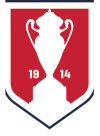30 YEARS LATER: How the USMNT Qualified for the 1990 FIFA World Cup
Thirty years ago this week, the U.S. Men’s National Team made its first appearance at the FIFA World Cup since 1950. To mark the occasion, ussoccer.com spoke to the players that propelled the team to Italia ’90 and helped a young U.S. side make its first mark on the world stage in 40 years.


























